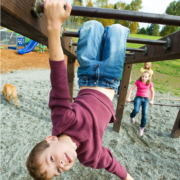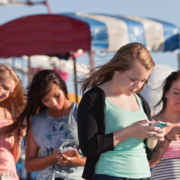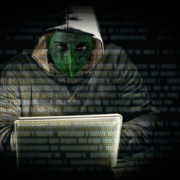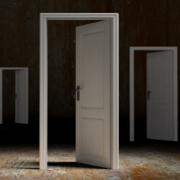Digital Media and Relationships
In observing the people at Paula’s high school reunion, the one thing that stood out was that the relationships the classmates had formed during their time together had endured. True, they had a small graduating class with fewer than 75 students, but even in bigger schools with hundreds of graduates, there are groups of students who still know each other well because of activities they participated in together.
What impact would digital media have had back then? Paula was asked to speak as a representative of her class and in looking back, she said this:
We didn’t have an amazing computer in our pockets that we use for vital things such as taking pictures of our food and watching cat videos and texting each other: “What do you want for dinner?” “I don’t know, what do you want?” But we had down time, free time to spend just being a teenager. No one stared at the phone—that would have been silly. We looked at the scenery and at each other.
How would social media have affected the class of 1967? They were a social network. They were involved in each other’s lives during school, sports, and other activities, live and in person. I’m sure it would have had an impact; I just don’t know if it would have been in a positive way. There would most likely have been less live social contact and instead a lack of human contact. There would have been less time to talk face to face because there would be so much more access to more people, even in a very impersonal way.
The irony of digital media today is that social media is how many members of the class reunion found each other; it certainly helped spread the word of the reunion itself. They had gotten reacquainted before they got together in person and had seen pictures of each other’s spouses and kids and grandkids on Facebook and Instagram. Digital media are just tools of communication, and that’s how the reunion class uses them.
Digital Media and the Class of 2018
Don’t for a minute think I’m a Luddite. After all, I’m communicating with you three times a week via email and many of you read this on your cell phones.
Whether the use of digital media contributes to ADHD is not certain, but it does contribute to one thing for sure: isolation. A 2016 article in Psychology Today said:
Humans are hardwired to interact with others, especially during times of stress. When we go through a trying ordeal alone, a lack of emotional support and friendship can increase our anxiety and hinder our coping ability … Other studies confirm that loneliness isn’t good for anyone’s health. It increases levels of stress hormones in the body while leading to poor sleep, a compromised immune system and, in the elderly, cognitive decline.
Texting and commenting on social media platforms cannot convey true emotion, no matter how many emojis you use. The only way that works is live social interaction where you can look someone in the eye when you talk to them or at the very least hear their tone when speaking on the phone.
When you think about health and what can impact it, the bonds we make with other humans is important. It can help our mental health in many ways and that can impact our physical health. To me, that’s what the class of 2018 might be missing: the social interaction and personal bonds that transcend decades. When they meet in 50 years, will they talk about the great text or Tweet someone sent or the excellent Instagram story someone put together? I doubt it. And that’s their loss.
What are you prepared to do today?
Dr. Chet
References:
1. JAMA. 2018;320(3):255-263. doi:10.1001/jama.2018.8931.
2. https://www.psychologytoday.com/us/blog/out-the-ooze/201611/the-perils-social-isolation









